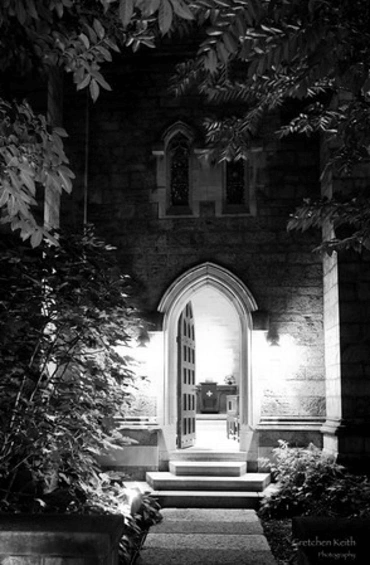1
Tu feras aussi le pavillon de dix rouleaux de fin lin retors, de pourpre, d'écarlate, et de cramoisi; et tu les feras semés de Chérubins d'un ouvrage exquis.
2
La longueur d'un rouleau sera de vingt-huit coudées, et la largeur du même rouleau de quatre coudées; tous les rouleaux auront une même mesure.
3
Cinq de ces rouleaux seront joints l'un à l'autre, et les cinq autres seront aussi joints l'un à l'autre.
4
Fais aussi des lacets de pourpre sur le bord d'un rouleau, au bord du [premier] assemblage; et tu feras la même chose au bord du dernier rouleau dans l'autre assemblage.
5
Tu feras [donc] cinquante lacets en un rouleau, et tu feras cinquante lacets au bord du rouleau qui est dans le second assemblage; les lacets seront vis-à-vis l'un de l'autre.
6
Tu feras aussi cinquante crochets d'or, et tu attacheras les rouleaux l'un à l'autre avec les crochets; ainsi sera fait un pavillon.
7
Tu feras aussi des rouleaux de poils de chèvres pour servir de Tabernacle par-dessus le pavillon; tu feras onze de ces rouleaux.
8
La longueur d'un rouleau sera de trente coudées, et la largeur du même rouleau sera de quatre coudées; les onze rouleaux auront une même mesure.
9
Puis tu joindras cinq rouleaux à part, et six rouleaux à part; mais tu redoubleras le sixième rouleau sur le devant du Tabernacle.
10
Tu feras aussi cinquante lacets sur le bord de l'un des rouleaux, [savoir] au dernier qui est accouplé, et cinquante lacets sur le bord de l'autre rouleau qui est accouplé.
11
Tu feras aussi cinquante crochets d'airain, et tu feras entrer les crochets dans les lacets; et tu assembleras ainsi le Tabernacle, tellement qu'il ne soit qu'un.
12
Mais ce qu'il y aura de surplus du rouleau du Tabernacle, [savoir] la moitié du rouleau qui demeurera de reste, flottera sur le derrière du pavillon.
13
Et une coudée deçà, et une coudée delà, de ce qui sera de surplus dans la longueur des rouleaux du Tabernacle, flottera aux côtés du pavillon çà et là, pour le couvrir.
14
Tu feras aussi pour ce Tabernacle une couverture de peaux de moutons teintes en rouge, et une couverture de peaux de taissons par-dessus.
15
Et tu feras pour le pavillon des ais de bois de Sittim, qu'on fera tenir debout.
16
La longueur d'un ais sera de dix coudées, et la largeur du même ais d'une coudée et demie.
17
Il y aura deux tenons dans chaque ais, en façon d'échelons l'un après l'autre; [et] tu feras ainsi de tous les ais du pavillon,
18
Tu feras donc les ais du pavillon, [savoir] vingt ais au côté qui regarde vers le Midi.
19
Et au-dessous des vingt ais tu feras quarante soubassements d'argent; deux soubassements sous un ais pour ses deux tenons, et deux soubassements sous l'autre ais pour ses deux tenons.
20
Et vingt ais à l'autre côté du pavillon, du côté du Septentrion.
21
Et leurs quarante soubassements seront d'argent, deux soubassements sous un ais, et deux soubassements sous l'autre ais.
22
Et pour le fond du pavillon vers l'Occident, tu feras six ais.
23
Tu feras aussi deux ais pour les encoignures du pavillon, aux deux côtés du fond.
24
Et ils seront égaux par le bas, et ils seront joints et unis par le haut avec un anneau; il en sera de même des deux [ais] qui seront aux deux encoignures.
25
Il y aura donc huit ais, et seize soubassements d'argent; deux soubassements sous un ais, et deux soubassements sous l'autre ais.
26
Après cela tu feras cinq barres de bois de Sittim, pour les ais d'un des côtés du pavillon.
27
Pareillement [tu feras] cinq barres, pour les ais de l'autre côté du pavillon; et cinq barres pour les ais du côté du pavillon, pour le fond, vers le côté de l'Occident.
28
Et la barre du milieu sera au milieu des ais, courant d'un bout à l'autre.
29
Tu couvriras aussi d'or les ais, et tu feras leurs anneaux d'or, pour mettre les barres, et tu couvriras d'or les barres.
30
Tu dresseras donc le Tabernacle selon la forme qui t'en a été montrée en la montagne.
31
Et tu feras un voile de pourpre, d'écarlate, de cramoisi, et de fin lin retors; on le fera d'ouvrage exquis, semé de Chérubins.
32
Et tu le mettras sur quatre piliers de bois de Sittim couverts d'or, ayant leurs crochets d'or, et ils seront sur quatre soubassements d'argent.
33
Puis tu mettras le voile sous les crochets, et tu feras entrer là dedans, [c'est-à-dire], au-dedans du voile, l'Arche du Témoignage, et ce voile vous fera la séparation d'entre le lieu Saint et le lieu Très-Saint.
34
Et tu poseras le Propitiatoire sur l'Arche du Témoignage, dans le lieu Très-saint.
35
Et tu mettras la table au dehors de ce voile, et le chandelier vis-à-vis de la table, au côté du pavillon, vers le Midi; et tu placeras la table au côté du Septentrion.
36
Et à l'entrée du Tabernacle tu feras une tapisserie de pourpre, d'écarlate, de cramoisi et de fin lin retors, d'ouvrage de broderie.
37
Tu feras aussi pour cette tapisserie cinq piliers de bois de Sittim, que tu couvriras d'or, et leurs crochets seront d'or; et tu fondras pour eux cinq soubassements d'airain.







